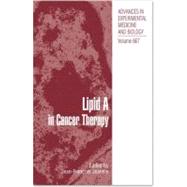
What is included with this book?
| Foreword | p. v |
| Introduction: Historical Background | p. 1 |
| Structure and Synthesis of Lipid A | p. 5 |
| Introduction | p. 5 |
| General Architecture of Lipid A | p. 6 |
| Structural Variations of Lipid A | p. 9 |
| Chemical Synthesis of Lipid A | p. 17 |
| Conclusion | p. 19 |
| Conformation and Supramolecular Structure of Lipid A | p. 25 |
| Abstract | p. 25 |
| Introduction | p. 25 |
| Aggregate Structure and Molecular Conformation | p. 27 |
| Intramolecular Conformation | p. 28 |
| Phase States and Transitions between Them | p. 29 |
| Molecular Modelling | p. 31 |
| Physicochemical Data in Relation to Biological Activity | p. 32 |
| Conformational Concept of Lipid A Action: How Does Endotoxin Interact with Immune Cells? | p. 33 |
| Interactions Between Lipid a and Serum Proteins | p. 39 |
| Abstract | p. 39 |
| Proteins Involved in Lipid A/LPS-Mediated Immune Cell Activation | p. 39 |
| Detection of Lipid a by Immunoglobulins | p. 41 |
| Proteins Involved in Lipid A/LPS Transport | p. 41 |
| Lipoproteins | p. 42 |
| Proteins Neutralizing the Immune-Cell Activating Properties of Lipid A/LPS | p. 44 |
| Conclusion | p. 46 |
| The Lipid A Receptor | p. 53 |
| Abstract | p. 53 |
| Introduction | p. 53 |
| Components of the Lipid A Receptor | p. 53 |
| Conclusion | p. 56 |
| Lipid A Receptor TLR4-Mediated Signaling Pathways | p. 59 |
| Abstract | p. 59 |
| Introduction | p. 59 |
| The MyD88-Dependent and MyD88-Independent Pathways | p. 60 |
| TRIF: The TIR Domain-Containing Signal Transducer for the MyD88-Independent Pathway | p. 60 |
| TIRAP and TRAM: Another Two TIR Domain-Containing Molecules | p. 62 |
| Negative Regulation of LPS-Induced Signaling Pathways | p. 62 |
| Two-Step Gene Induction Program in TLR4-Mediated Immune Responses | p. 64 |
| Conclusion | p. 66 |
| Lipid A-Induced Responses In Vivo | p. 69 |
| Abstract | p. 69 |
| Fate of Lipid A in the Bloodstream | p. 69 |
| General Immune Responses to Lipid A | p. 70 |
| Systemic Toxicity | p. 71 |
| Lipid A Tolerance | p. 72 |
| Tumor Immune Responses | p. 73 |
| Vascular Response | p. 75 |
| Conclusion | p. 76 |
| Lipid A-Mediated Tolerance And Cancer Therapy | p. 81 |
| Abstract | p. 81 |
| Early, Late and Cross Tolerance | p. 81 |
| The Isolation of Various Lipid A Structures and Synthesis of Analogs | p. 82 |
| Relevance of Tolerance to the Use of LPS/Lipid A in Cancer | p. 83 |
| Mechanisms of Early LPS/Lipid A-Mediated Tolerance | p. 86 |
| Mechanisms of Tolerance of Other Lipid A Structures and LPS Antagonists | p. 91 |
| Conclusion | p. 91 |
| Lipid A In Cancer Therapies: Preclinical Results | p. 101 |
| Abstract | p. 101 |
| Introduction | p. 101 |
| LPS Treatments | p. 101 |
| Lipids A Treatments | p. 102 |
| DT-5461 | p. 103 |
| ONO-4007 | p. 104 |
| OM-174 | p. 106 |
| Conclusion | p. 107 |
| Monophosphoryl Lipid A (MPL) As An Adjuvant For Anti-Cancer Vaccines: Clinical Results | p. 111 |
| Abstract | p. 111 |
| Section 1: Vaccines Targeting Specific Cancer Types | p. 112 |
| Section 2: Vaccines Targeting Specific TAAs Expressed on Multiple Tumor Types | p. 115 |
| Conclusion | p. 119 |
| Antitumoral Effects Of Lipids A, Clinical Studies | p. 125 |
| Abstract | p. 125 |
| Introduction | p. 125 |
| Immunological Background Underlying the Clinical Potential Interest | p. 126 |
| Clinical Studies | p. 127 |
| Conclusion | p. 129 |
| Conclusion | p. 133 |
| Index | p. 135 |
| Table of Contents provided by Ingram. All Rights Reserved. |
The New copy of this book will include any supplemental materials advertised. Please check the title of the book to determine if it should include any access cards, study guides, lab manuals, CDs, etc.
The Used, Rental and eBook copies of this book are not guaranteed to include any supplemental materials. Typically, only the book itself is included. This is true even if the title states it includes any access cards, study guides, lab manuals, CDs, etc.